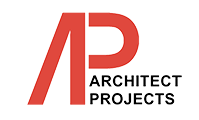Placing design stage HVAC front and centre

The one-year grace period to comply with Part L is now over, ushering in a new era in UK energy performance targets. Behind the changes is a government push for cleaner, greener infrastructure, with Net Zero targets and the Future Buildings Standard already steering carbon reduction strategies.
The pressure is now on asset owners, especially those in the commercial sector, to reduce carbon emissions and address energy inefficiency wherever possible.
However, with Savills suggesting 85% of current office stock would only achieve a Grade B EPC, failing to meet 2030 energy standards[1], it seems current efforts are set to fall short of official targets.
So it comes as no surprise building owners, specifiers and contractors alike are now doubling down to find, remove and replace existing carbon-intensive systems to achieve regulatory compliance.
Inevitably, this has put many mechanical HVAC systems under the spotlight. Notorious for using large amounts of power, the latest figures from the UK Green Building Council highlight their substantial impact; responsible for nearly a quarter (23%) of all built environment emissions.
With many of these systems still being specified, or in operation, across the UK’s commercial built environment, it’s a large-scale issue that needs to be tackled with new builds and retrofits. With this massive task in mind, how can architects best approach the issue to ensure future sustainable success? Let’s find out…
Effecting immediate change
A good starting point is recognising the importance of early-stage specification, and creating a tailor-made HVAC strategy to ensure that the most effective, sustainable and best-value solution is implemented.
Approached correctly, it will result in a system requiring less maintenance and lower the likelihood of expensive replacement down the line, simultaneously reducing emissions and improving energy efficiency.
Furthermore, planned in conjunction with other elements of the building, these properties can be enhanced for greater financial and carbon savings. For example, specified alongside a low u-value fabric, the building’s overall thermal performance is enhanced without the need for mechanical support, slashing heating bills into the bargain.
It can also pave the way for seamless integration of the HVAC system with Building Management Systems (BMS), giving facilities managers’ greater control over heating and ventilation as soon as the property comes online.
A breath of fresh air
From here on, it’s about choosing an HVAC system that best meets the requirements of the design brief. Given the increasing focus on sustainability, one of the industry’s front-runners is natural ventilation.
These low-impact, easy-to-install, and operate systems harness the natural air supply from the surrounding environment to seamlessly ventilate interior spaces. Incorporated with the latest AI-backed technology, these systems are programmable and can be automated in conjunction with the BMS to manage airflow, guaranteeing a consistently comfortable atmosphere by helping to adjust temperatures as required.
That’s not all, these low-maintenance systems can also be configured to account for peak and low occupancy periods, which is critical for building owners managing fluctuating capacities.
A healthy ROI
The added benefit of planning-in natural ventilation goes beyond protecting the planet, it also sustains the building’s occupants. With Part F, which focuses on minimum acceptable levels of indoor air quality, now enforced, HVAC systems also need to comply with this standard.
It’s widely known that access to fresher air can significantly improve indoor Air Quality (IAQ) and contribute to a healthier, happier and more productive working environment. Natural ventilation, by continuously flowing fresh air throughout a building, rather than recycling it like many mechanical systems, can help achieve this scenario in tandem with the aforementioned Part L requirements.
So you see, HVAC is not something to be overlooked or tackled at a later stage. It needs to be considered from the very beginning. Otherwise, you run the real risk of derailing the overall whole-life sustainability of the building, falling out of compliance and increasing the risk of poor IAQ.
The onus and opportunity now lie with specifiers, who must see early-stage sustainable HVAC specification as a key component toward a cleaner, greener and healthier built environment.
The good news is natural ventilation is now mainstream, affordable and proven. Everyone from architects to asset owners can breathe easy in the knowledge they have a tried-and-tested ventilation solution that is not going to increase their collective carbon footprint or break the bank.
Erik Boyter, CEO, WindowMaster
[1] https://www.savills.co.uk/insight-and-opinion/savills-news/326779-0/uk-office-landlords-could-be-set-to-spend-up-to-%C2%A363-billion-to-meet-new-energy-standards
